Recent Articles
Popular Makes
Body Types
2018 Acura NSX vs. 2018 Audi R8: Which Is Best?

2018 Acura NSX vs Audi R8
Choosing between the 2018 Acura NSX and 2018 Audi R8 is not too straightforward, despite the cars' similarities. Both were all-new generations that debuted last year, attempting to arrive at the same destination (your garage) from two different starting points.
The first generation of the R8 started life as a multiple Le Mans-winning race car. The NSX has street-car roots, but it is now participating in motorsports. Both, however, are thoroughly modern mid-engined two-seat supercars, sufficiently civilized to drive day in and day out with long stints behind the wheel, while also being powerful and precise enough to make a satisfying track-side experience. Let’s see how else they stack up.
Pricing
The 2018 Acura NSX is priced at $157,800. Compare that with $166,150 for the 2018 Audi R8. Both figures include destination fees.
Even though the NSX is the more affordable of the two, it’s remarkable for the fact that it’s a hybrid, and one of the few hybrid supercars around. As we will see, the Acura's three electric motors (one in the back, one for each front wheel) provide a sweet amount of torque to help propel the NSX off the line quicker than its rival. Both cars use a lot of aluminum in their construction, in an effort to keep weight in check.
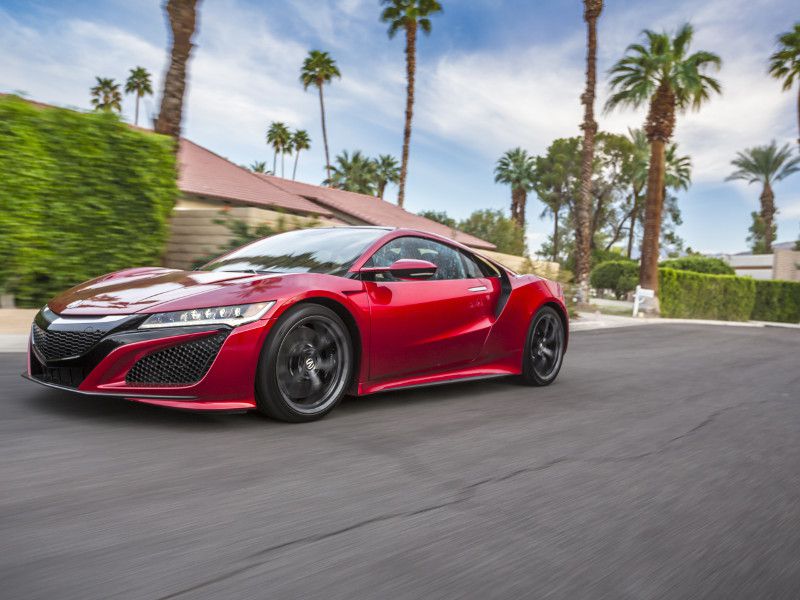
Photo by Acura
Engines and Transmissions
The NSX enjoys 573 horsepower and 476 lb-ft of torque from a turbocharged 3.5-liter V6 and three electric motors. That energy drives all four wheels through a nine-speed dual-clutch transmission. Don’t worry about the dual-clutch aspect. From the driver’s point of view, it can be manually shifted or operate like a regular automatic. The Environmental Protection Agency estimates the NSX's fuel consumption at 21 mpg in the city, 22 mpg on the highway, and 21 mpg combined.
The R8 has a naturally aspirated (meaning it's not supercharged or turbocharged) 5.2-liter V10 developing 532 hp and 398 lb-ft of torque. This engine is linked to a seven-speed dual-clutch transmission, driving all four wheels. Fuel economy ratings are 14 mpg in the city, 22 mpg on the highway, and 17 mpg combined.
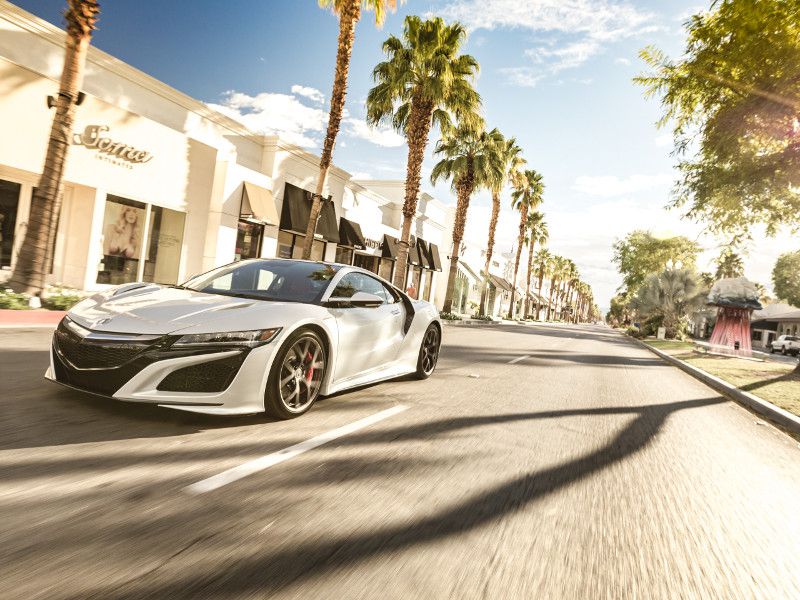
Photo by Acura
Equipment
The NSX comes with the standard equipment appropriate to a high-end luxury car, such as an adaptive suspension, 19-inch alloy wheels up front, wider 20-inch alloys at the back, variable-ratio steering, navigation, leather upholstery, and Apple CarPlay/Android Auto smartphone integration.
The R8 enjoys a similarly comprehensive inventory. Other items include navigation controlled by voice commands or a touchpad with handwriting recognition, Audi's Virtual Cockpit driver information display, an adaptive rear spoiler (which comes into operation at 75 mph), selectable drive modes (Comfort, Auto, Dynamic, and Individual), and front and rear parking sensors. But not only does the NSX have comparable equipment, but it's also less expensive.

Photo by Acura
Options
The NSX offers a carbon fiber roof, which reduces weight and lowering the overall center of gravity; carbon-ceramic brake discs, which are great on the track because they’re fade-free but cost $9,900 before silver- or red-painted calipers; a carbon fiber rear spoiler; and higher-grade leather. A Technology package brings an audio system upgrade, plus front and rear parking sensors.
The R8’s options list also includes equally expensive ceramic brake discs, plus 20-inch alloy wheels, 18-way power-adjustable sport seats with active bolstering, variable-ratio steering, and an upgrade to a Bang & Olufsen sound system (one of the finest audio equipment manufacturers).
Tie
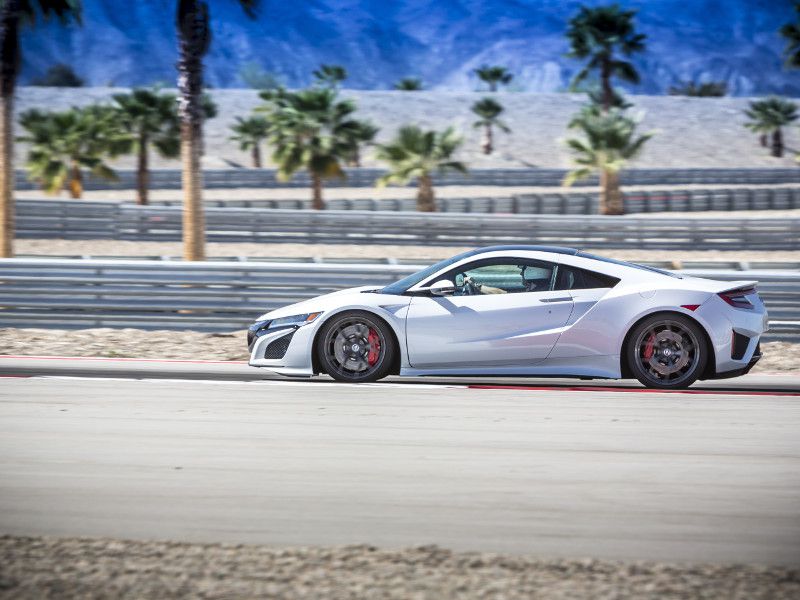
Photo by Acura
Standout Features and Technology
In the NSX’s standard all-wheel drive system, there is no mechanical link between the front and rear axles. Torque vectoring, the fine attenuation of power to each wheel to achieve almost-heroic cornering grip, is done by software instead of hardware. This is also the only supercar with a selectable driving mode called Quiet. The other modes are Sport, Sport Plus, and Track.
Even though it doesn’t match the NSX’s output, the R8’s V10 engine is glorious. It sounds thrilling, especially when revved hard. Old-school, perhaps, but super-effective — its spine-tingling quality gives the Audi the win in this category. The Virtual Cockpit digital display system is another piece of coolness, as are the microphones in the safety belts for voice control and Bluetooth-enabled phone calls.
Audi R8

Photo by Audi
Performance
The NSX has a claimed top speed of 191 mph. Acura doesn’t state a standstill-to-60 mph time, but 3.1 seconds is possible. The 3,803 pounds of curb weight is distributed quite evenly, 42/58 front to rear.
According to Audi, the R8 will hit 199 mph. But its standstill-to-60 time is slower than the NSX’s: 3.5 seconds. That said, 3.5 seconds is still really, really quick. The R8 is also the lighter of the two, with a curb weight of 3,737 pounds. Neither car will disappoint. We’d like to give this to the R8, but maximum speeds are ultimately less important than acceleration.
Acura NSX
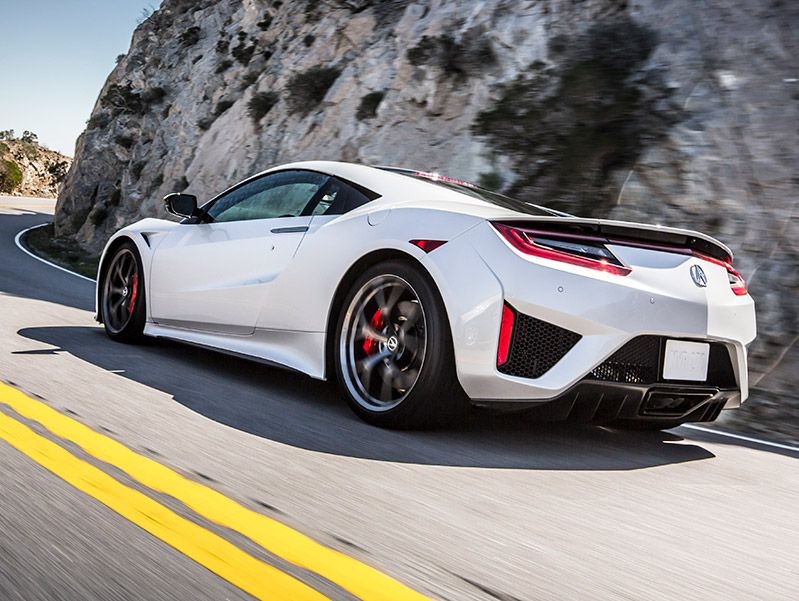
Photo by Acura
Handling
Before the NSX, the R8 was probably the most benign-handling mid-engined supercar. It’s easy to push it a little more than before, to go beyond most cars’ capabilities — yet the R8 takes it all in its considerable stride. In this most elemental version (it’s wrong to call it “basic”), there’s no trickery to such handling prowess, just the fruits of talented and experienced engineers and suspension tuners.
The NSX has a more complex setup. A computer controls engine and electric power going to each rear wheel, and how the forward electric motors drive the front wheels. But despite the NSX’s incredible tech-induced talent for sticking to a line, the more tactile Audi is a greater pleasure.
Audi R8
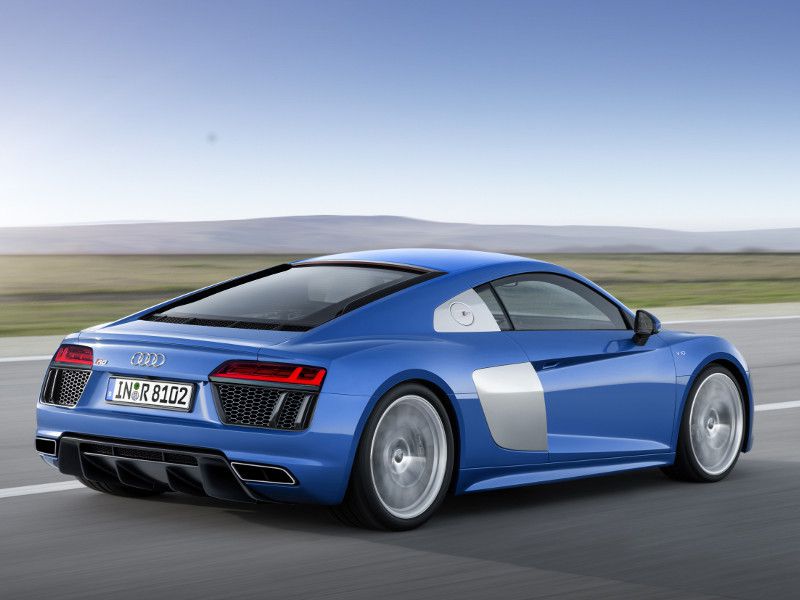
Photo by Audi
Exterior Design
There’s no shortage of drama to the NSX’s visuals. The large, steeply raked windshield crests just before the roofline starts its rapid descent to the tail. The wheels fill their fenders with a just-right snugness. At night, the rows of LED headlamps make onlookers think there’s a spacecraft approaching them.
This second-generation R8 isn’t so different to the first, especially along the sides. But the coolly cerebral, taut and polished Audi design philosophy works just as well on this car as it does on any other Audi. Perhaps even more so. In a way, the R8 has the advantage because it’s already been generally accepted as a top supercar. But it all comes down to individual tastes.
Tie
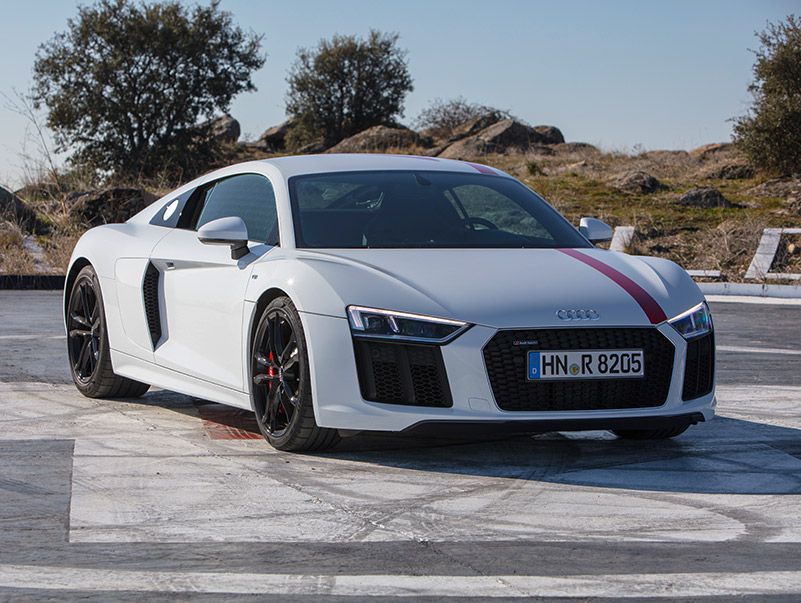
Photo by Audi
Interior Design
Despite some sporty touches like carbon fiber cowling over the instrument cluster, the NSX seems more like a futuristic regular car than a traditional driver’s machine. Even so, the driving position is low-slung and snug, and the ergonomics in general are faultless.
There’s a greater sense of occasion stepping into the R8. Just firing up the engine by pressing the steering-wheel-mounted button is exciting, while the leather and aluminum accents are simultaneously lush and cool. Here, too, the ergonomics are spot-on. Design is somewhat subjective, but just because the R8 is a sports car, that doesn’t mean it lacks the typical Audi interior design virtuosity.
Audi R8
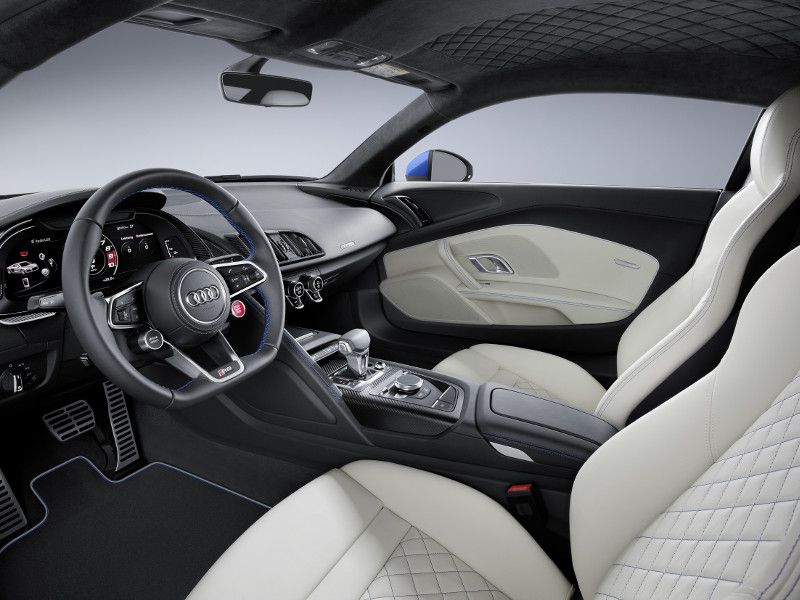
Photo by Audi
Overall
The Acura NSX is easy to drive and does a lot of the hard handling work. This approach has its upsides and downsides. There’s less likelihood of someone with more enthusiasm than talent getting catastrophically out of shape, but the car doesn’t let the driver get so involved. And that’s essentially why we'd pick the Audi, despite the Acura winning so many sections.
In contrast with the NSX, the R8 has this uncanny ability to engage the driver by degrees. It becomes more responsive when the intensity of driver input increases. For many years, the Porsche 911 was the top sport machine. These days, it has a genuine rival in the R8. It’s one of those cars that an enthusiast really ought to drive.
Audi R8

Photo by Audi